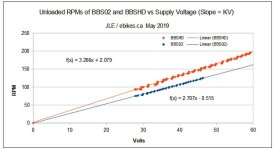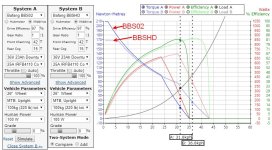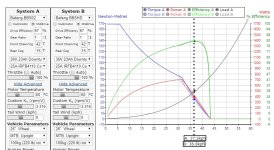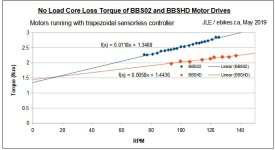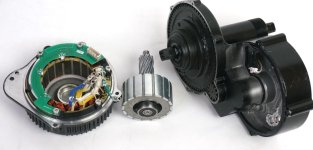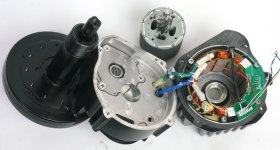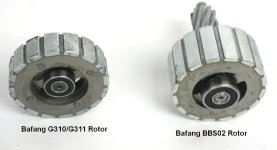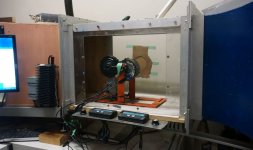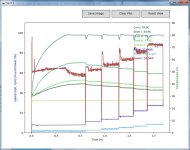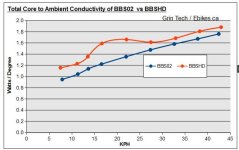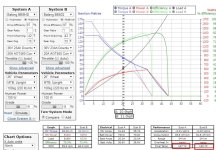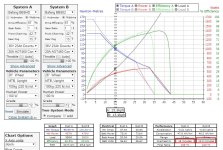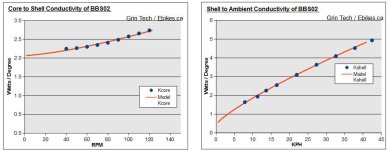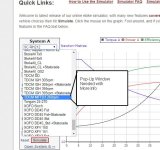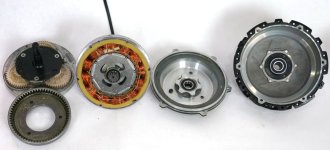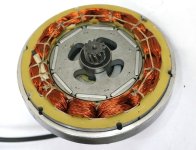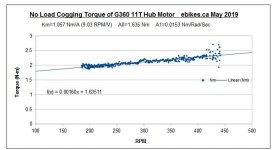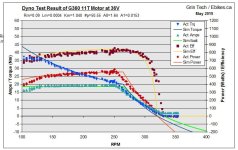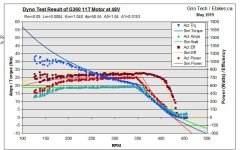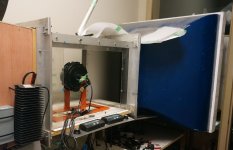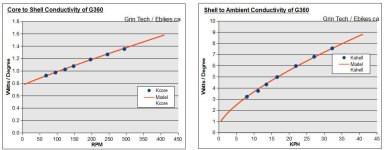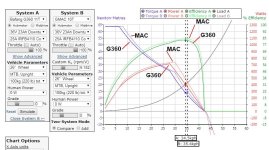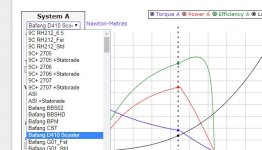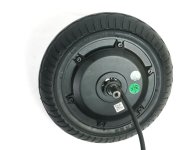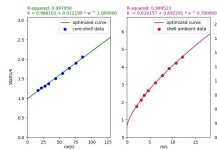Sharp eyes may have noticed that we added a 'mid-drive' option to the online motor simulator last month and have been incrementally flushing out the details. I alluded to this plan earlier here
https://endless-sphere.com/forums/viewtopic.php?f=2&t=89877&p=1386574#p1386574
and it's finally live now. If you've used the simulator recently on your browser you will probably need to clear the cache by pressing Cntrl+F5 to have the new model load. Then if you check the "mid-drive" checkbox then the following parameters show up in the drop down:
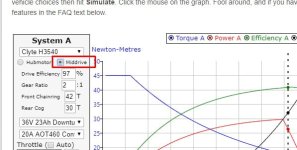
Efficiency Is just an estimate of the mechanical drivetrain efficiency from the motor to the wheel. We have it defaulting as 97%, which is reasonable for a chain drive, but if you are running multiple reduction stages it could be lower than this.
Gear Ratio This is a gear reduction ratio from the motor to the crankset. It is useful if you are using a hub motor as a mid-drive motor through a separate chain and sprocket (stokemonkey style). In the drop-down selector for the BBS02/BBSHD motors, the gear ratio is left as ONE since the gearing to the crankset is included in the motor model.
Front Chainring / Rear Cog These fields are just the teeth counts of the sprockets on the cranks and on the rear wheel. At the moment they are numeric entries requiring a keyboard but we'll be updating this to be a drop-down selector soon so that it's easier to select from touch screens or with a mouse.
Actually all the info about each parameter has now been included as tooltips if you hover your mouse over any setting, and that should help provide in context info

The net effect of using this mid-drive checkbox is just as if you had input a wheel diameter that was scaled like
Wheel Diameter = Actual Wheel Diameter * Front Chainring / Rear Cog / Gear Ratio
And the output torque supplied to the wheel is scaled similarly and also multiplied by the drivechain efficiency term.
The idea here is to simplify the process of seeing how mid-drive setups will behave in different gear combinations.
https://endless-sphere.com/forums/viewtopic.php?f=2&t=89877&p=1386574#p1386574
and it's finally live now. If you've used the simulator recently on your browser you will probably need to clear the cache by pressing Cntrl+F5 to have the new model load. Then if you check the "mid-drive" checkbox then the following parameters show up in the drop down:

Efficiency Is just an estimate of the mechanical drivetrain efficiency from the motor to the wheel. We have it defaulting as 97%, which is reasonable for a chain drive, but if you are running multiple reduction stages it could be lower than this.
Gear Ratio This is a gear reduction ratio from the motor to the crankset. It is useful if you are using a hub motor as a mid-drive motor through a separate chain and sprocket (stokemonkey style). In the drop-down selector for the BBS02/BBSHD motors, the gear ratio is left as ONE since the gearing to the crankset is included in the motor model.
Front Chainring / Rear Cog These fields are just the teeth counts of the sprockets on the cranks and on the rear wheel. At the moment they are numeric entries requiring a keyboard but we'll be updating this to be a drop-down selector soon so that it's easier to select from touch screens or with a mouse.
Actually all the info about each parameter has now been included as tooltips if you hover your mouse over any setting, and that should help provide in context info

The net effect of using this mid-drive checkbox is just as if you had input a wheel diameter that was scaled like
Wheel Diameter = Actual Wheel Diameter * Front Chainring / Rear Cog / Gear Ratio
And the output torque supplied to the wheel is scaled similarly and also multiplied by the drivechain efficiency term.
The idea here is to simplify the process of seeing how mid-drive setups will behave in different gear combinations.


